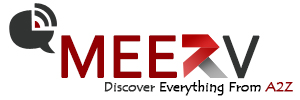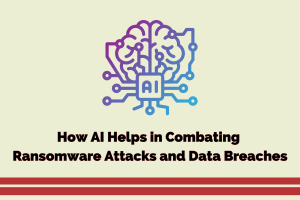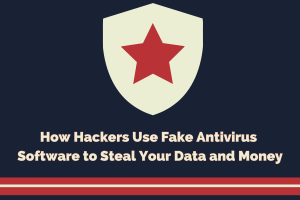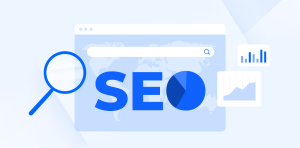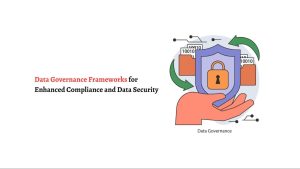What is SOC 2 Compliance?

Cybersecurity frameworks establish the optimal methodologies, and governing principles organizations should adhere to enhance their security stance. One such framework is SOC 2, which applies to technology companies that handle and store consumer data in the cloud.
One way organizations accomplish this is by utilizing compliance and security frameworks to implement the policies, procedures, controls, and monitoring required to secure their networks and data and demonstrate their clients’ trustworthiness; doing so has been demonstrated to be effective.
In this article, let us understand more the SOC 2 compliance, how it may enhance your organization’s security posture, and how to achieve SOC 2 compliance using contemporary GRC technologies.
Understanding SOC 2 Compliance
AICPA created SOC 2 as an optional cybersecurity compliance framework for service firms that outlines how these organizations should manage client data. The standard addresses five pillars: security, availability, processing integrity, confidentiality, and privacy, which are named Trust Services Criteria (TSC).
One component of the Service Organization Control reporting platform that incorporates SOC 2 compliance is the American Institute of Certified Public Accountants. Your company will comply with all relevant laws, your customers’ data will be kept safe and confidential, and you have taken all precautions to reduce risk so you can rest easy.
SOC 2 lacks a predetermined set of controls, tools, or procedures. Instead, it outlines the criteria for maintaining strong information security, enabling businesses to use the policies and procedures that apply to their goals and activities.
The Core Components of SOC 2
External auditors grant the SOC 2 accreditation. They analyze the vendor’s established systems and processes to evaluate its adherence to one or more of the vendor’s trust principles.
The principles of trust are outlined as follows:
Security
Data and system security refers to the steps taken to avoid intrusion by outside parties. A number of information technology security measures, like firewalls and two-factor authentication, may help you avoid this.
Availability
Maintaining and having operation, monitoring, and maintenance controls determines availability, whether infrastructure’s software or information. In addition to evaluating and reducing any external risks, this criterion determines if your organization maintains basic acceptable levels of network performance.
Processing integrity
Ensuring the integrity of processing is crucial for preventing unintended or unexpected manipulations, errors, delays, omissions, or disruptions that may occur during the execution of system operations. It indicates that the data processing procedures’ author procedures completeness and accuracy are all present and functioning as they should.
Confidentiality
Confidentiality pertains to an organization’s capabilities and data that ought to be limited to a predetermined group of individuals or entities. Confidential company information, including business plans, intellectual property, and client data intended solely for company personnel, as well as any other information mandated for protection by law, regulations, contracts, or agreements, is encompassed within this category.
Privacy
Privacy refers to an organization’s ability to protect personally identifiable information from unwanted access. This information often consists of personal details such as name, social security number, address, or other identifying factors like race, ethnicity, or health information.
SOC 2 does not provide specific controls, tools, or procedures. Instead, it outlines the criteria for maintaining strong information security, enabling each firm to implement the practices and procedures that apply to their specific goals and activities. Organizations adopting SOC 2 might strive to comply with all or a subset of the five Trust Services Criteria (TSCs).
Top Benefits of SOC 2 Compliance
A third-party technological audit verifies SOC 2 compliance. It requires businesses by building strategies and follow specific information security policies and processes that meet their goals.
Implementing a SOC 2 compliance program for six to twelve months will guarantee that a company’s data security protocols are aligned with the changing needs of cloud data security.
Being SOC 2 compliant guarantees your consumers and clients that you possess the necessary infrastructure, tools, and procedures to safeguard their information against illegal access, whether from internal or external sources.
Here are a few more advantages of achieving SOC 2 compliance:
Operational visibility
SOC 2 compliance entails clearly understanding typical business processes and consistently monitoring for harmful or unfamiliar activities. It also involves documenting any modifications made to system configurations and closely monitoring user access levels.
When security incidents occur, you possess the ability to detect, evaluate, and minimize risk by implementing stringent security measures. This ability is crucial for sustaining robust operational risk management.
Improved security posture
New security or compliance protocols spark debates throughout your organization. SOC 2 and its platform will give your company valuable insights and spark more conversations on how and where to improve operations and reduce security breaches, particularly as data breaches are becoming more common and costing the U.S. $9.4 million on average.
By undergoing SOC 2 certification, your company may identify sensitive data and apply controls, risk assessment procedures, and policies to secure it and your customers. SOC 2 compliance means you’ll have tools to identify risks and notify the proper parties so they can assess the danger and safeguard data and systems.
SOC 2 compliance helps SaaS firms manage and mitigate risk. It must be part of your compliance structure.
Increased third-party appeal and trust
In the U.S. market, SOC 2 is the most sought-after report for organizations dealing with third-party cloud storage consumer data.
SOC 2 makes it easy to show your security requirements to external stakeholders. Assume a prospective client, auditor, or third party wants a report. In that situation, you can offer them this if you are SOC 2 certified, have procedures in place, and have a reliable execution platform.
Attracts More Customers
One way to increase sales is to attract security-conscious prospects through SOC 2 compliance. Potential consumers who hold SOC 2 certification are frequently more inclined to engage your firm if you also possess a SOC 2 report about specific Trust Services Criteria.
You’ll also establish trust considerably more rapidly. Enhanced trust fosters a more significant number of enduring consumers. Marketing expenses are reduced while customer lifecycle value and growth opportunities are increased.
Improves Services
Improving security is simply one of the many benefits of a SOC 2 assessment. You may also use it to find methods to simplify your company’s controls and procedures.
Thus, you can enhance your organization’s and boost its productivity. You’ll be able to Put effort into your offerings, which will benefit your customers more in the long run.
Organizations are encouraged under SOC 2 to avoid reactive security measures and establish robust, long-term security programs.
It also pushes businesses to build security procedures that eventually become part of the company’s DNA. Company security measures such as single sign-on or multi-factor authentication, rules and documentation, etc., eventually get ingrained in the business process at your organization.
When all of this is in place, it becomes much simpler to obtain larger agreements, prepare for mergers and acquisitions, or raise more capital.
Saves Time and Money
If you do not own a SOC 2 report, you will likely be required to complete extensive security questionnaires for each corporate client.
These surveys may be intricate, precise, and challenging to complete if you lack pre-existing procedures and paperwork. Obtaining a SOC 2 report enhances your ability to attract a more extensive clientele and provides a robust framework of optimal measures for safeguarding sensitive information.
Furthermore, implementing SOC 2-compliant policies, processes, and controls will facilitate the attainment of additional security certifications.
By implementing these measures, you may efficiently disseminate SOC 2 reports to establish sufficient protective controls against third-party risks promptly. This strategy may accelerate the process of closing sales and provide your company with a significant competitive edge.
Why is SOC 2 compliance substantial?
The fact that an organization can demonstrate compliance with the criteria of SOC 2 demonstrates that it maintains a high degree of information security. It is possible to guarantee that sensitive information is handled responsibly by implementing stringent compliance rules, which are checked via on-site audits.
Final Thoughts
SOC 2 compliance is the epitome of security and trustworthiness in an era where data is paramount. Organizations exhibit their dedication to preserving the confidence of their clients and protecting sensitive data through strict adherence to the standards delineated in the SOC 2 framework.
The rewards for achieving compliance—increased credibility, a competitive edge, and risk reduction—are substantial and justify the difficulty of the voyage.
Therefore, SOC 2 compliance is essential for achieving success in the digital age when establishing trust.
